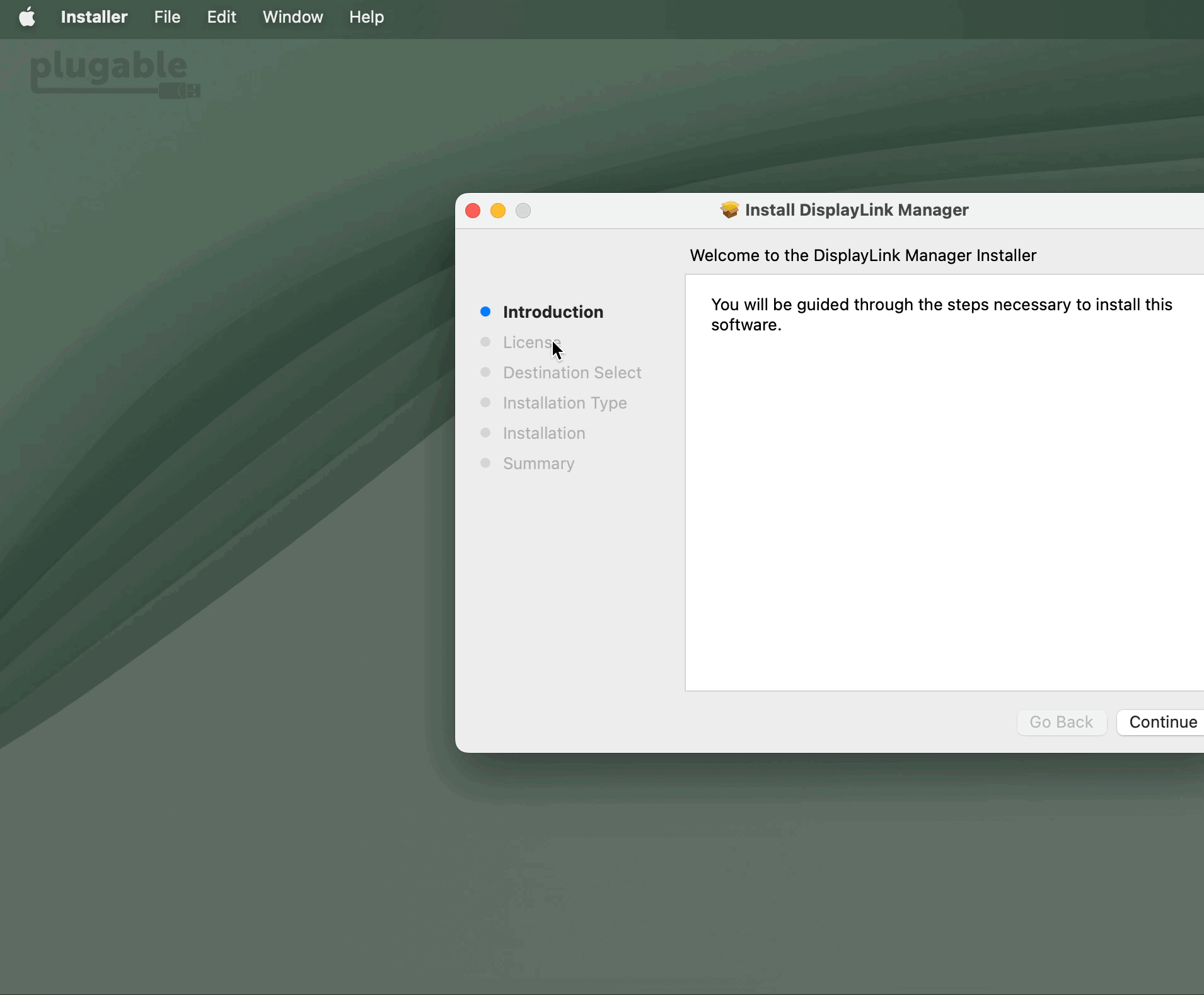In order to use one of our DisplayLink-based products with a Mac, the DisplayLink Manager Application must be installed.
We have found that in most cases the initial installation of the application completes without any issues.
With that said, there can be rare cases where the initial installation of the application may not complete successfully, and result in an ‘Unexpected Error’.
While each support case is unique, in our experience helping others we have found that there can be a few potential causes for this condition:
A. The end-user does not have the authority or permission in order to install software applications on the host computer.
In some enterprise or corporate environments there are security restrictions in place that prevent the end-user of the Mac from installing software applications.
If your Mac has been provided to you by your company or enterprise, please reach out to your organization’s IT support department in order to determine if you have both the necessary permission and authorization in order to install software on your Mac
B. The destination for the installation of the DisplayLink Manager Application software is not a valid location.
The DisplayLink Manager Application must be installed to the Mac’s built-in internal storage drive, and the drive must have the required amount of available storage space to accommodate the installation.
The DisplayLink Manager Application should not be installed on an external storage drive, or to any type of cloud storage drive (such as Microsoft OneDrive, DropBox or Google Drive) mounted as a local physical storage volume.
In addition, the DisplayLink Manager Application installation process should not be executed while the installation file is located within any type of cloud storage drive (such as Microsoft OneDrive, DropBox or Google Drive) mounted as a local physical storage volume.
C. macOS does not have permission to access the location of the DisplayLink Manager Application installation file.
The macOS ‘Installer’ application must have permission to access the location of the DisplayLink Manager Application installation file in order for the installation process to complete successfully. If this permission is not granted, then the installation process will not complete successfully.
In our experience helping others, we have found that some of our customers using macOS 13 Ventura may encounter an error during the installation process if this permission has not been granted.
To expand further and as an example, the first time you download an application to your Mac’s ‘Desktop’ folder and attempt to install the application macOS 13 Ventura will prompt you to grant permission to the macOS Installer application to access the ‘Desktop’ folder.

If this permission is granted, then the application installation process should complete successfully. If the permission is not granted, then the application installation will not complete successfully. If the permission is not granted and you attempt the installation process a second time, macOS will NOT prompt you to grant permission because of the previous denial.
The most straightforward way to ‘reset’ these permissions is as follows:
1. Click on the Apple Menu item at the top of your screen and select ‘System Settings’ from the menu that appears
2. In the list of items presented on the left-hand side of the ‘System Settings’ application window, click on the ‘Privacy & Security’ item.
3. Within the ‘Privacy & Security’ section, scroll down in the list and click on the ‘Files and Folders’ item.
4. Within the ‘Files and Folders’ section, there should be an entry for ‘Installer’. Click on the ‘Installer’ entry in order to select it. Once the item is selected, it should appear blue in color.
5. At the bottom of the list of items within the ‘Files and Folders’ section, there will be a small horizontal line that looks like a dash or a minus sign (-). Click on the horizontal line, which will remove the ‘Installer’ entry from the list.
*** Important note - please do not make any other changes in this location, other than what we describe above ***
6. Close the ‘Systems Settings’ application
7. Attempt the installation of the DisplayLink Manager Application again.
To help provide more context, an animated example of this process is below:


